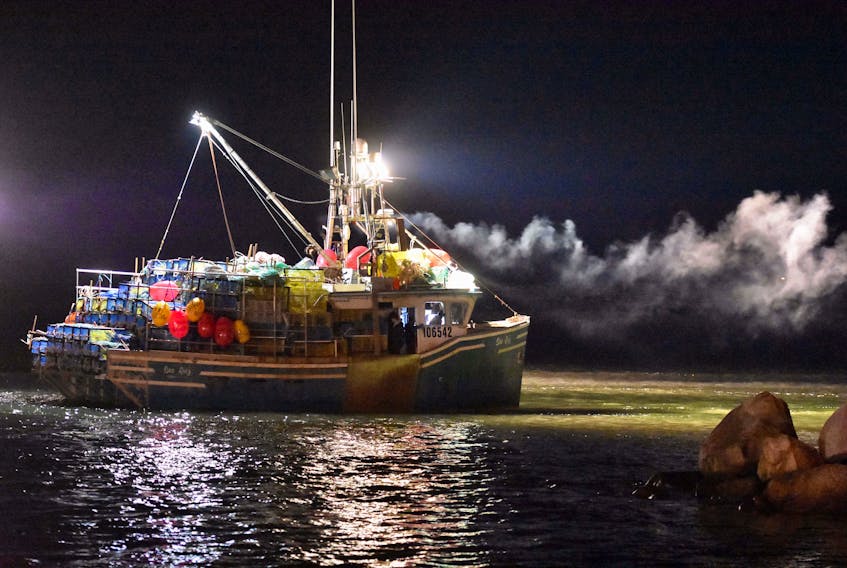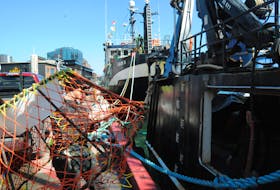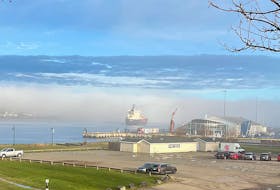YARMOUTH, N.S. — Another lobster season is set to get underway and along with the lobster traps and gear that fishermen will head out to sea with, they’ll also be bringing along high hopes.
High hopes for good catches and for good prices.
The Lobster Fishing Area (LFA) 34 lobster fishery in southwestern Nova Scotia and LFA 33 along the province’s South Shore make up the largest commercial lobster season in the region and the country.
The season is slated to get underway the last Monday of November – in this case Nov. 25 – unless the weather pushes back the start of the season. (Editor's note: Since this story was first posted the season opening has been delayed to forecasted wind for Nov. 25.)
Years ago, DFO and the LFA 34 industry advisory committee put in place an opening day protocol that dictates any winds forecasted above 25 knots will automatically trigger a postponement to the opening of the season in LFA 34.

DFO-industry conference calls will take place in both LFAs 33 and 34 in the days leading up to the opening to confirm the start date of the season. Last year the weather did push back the start of the season.
LFA 34 includes all of Yarmouth County and parts of Shelburne and Digby counties. LFA 33 picks up in Shelburne County and extends to Halifax County.
More than 5,000 fishermen will be aboard the boats on opening day, which includes season crew as well as extra crewmembers that are hired for the opening weeks of the season.
There are 1,662 lobster licences amongst these two LFAs.
The lobster industry is of vital economic importance to the rural communities of southwestern Nova Scotia.
It is the engine that largely drives the economy.

Catch comparisons
According to preliminary figures from DFO, catches were down during the 2018-2019 fishing season. The combined total landings for LFAs 34 and 33 was 28,334 tonnes. This compared to 31,678 tonnes the previous season.
The total landed value was also down during the 2018-2019 season, coming in at $498.2 million, compared to approximately $502 million the previous season.
The preliminary breakdown last year by fishing area was:
- LFA 33: 8,724 tonnes landed for a landed value $152.1 million.
- LFA 34: 19,610 tonnes landed for $346.5 million in landed value.
Boats fishing in LFA 34 are permitted to set 375 lobster traps at the start of the season.
Given this, safety is of the upmost priority as the season gets underway and boats head to the fishing grounds heavily laden with traps and gear.
Safety is a theme that is not only repeated, but also demonstrated leading up to the opening of the fishery as safety drills take place in ports throughout the region.
“In general, especially leading up to the season fishermen already have safety on their minds,” says Matthew Duffy, safety advisor for the FSANS. “They know setting day is a dangerous day when the boats are fully loaded and there’s a lot of moving parts happening.”

On the market front, the United States remains the largest live lobster export market. China has been an example of a growing market for lobster exports and other markets continue to emerge.

International trade is crucial to the fishery, says Geoff Irvine, executive director of the Lobster Council of Canada.
“Canada exports about 90 per cent of our lobster products so international trade is vital to this sector,” he says.
The lobster fishery in LFAs 34 and 33 is managed by effort control, which includes limits to the number of traps, licences and fishing days, and includes measures to address conservation, including a minimum size limit and a rule requiring the release of all female lobsters bearing eggs.
Price-wise last year, the season shore price opened at around $7 and rose to $11 during the season, before coming back down to around $6 or $7 at the end.
The LFA 34 and 33 seasons run to May 31.
This isn’t the only lobster fishery happening in western Nova Scotia. The LFA 35 season in Digby and the upper Bay of Fundy got underway in mid-October. That LFA has a split season that runs from Oct. 14 to Dec. 31 and again from the last day of February to July 31.









